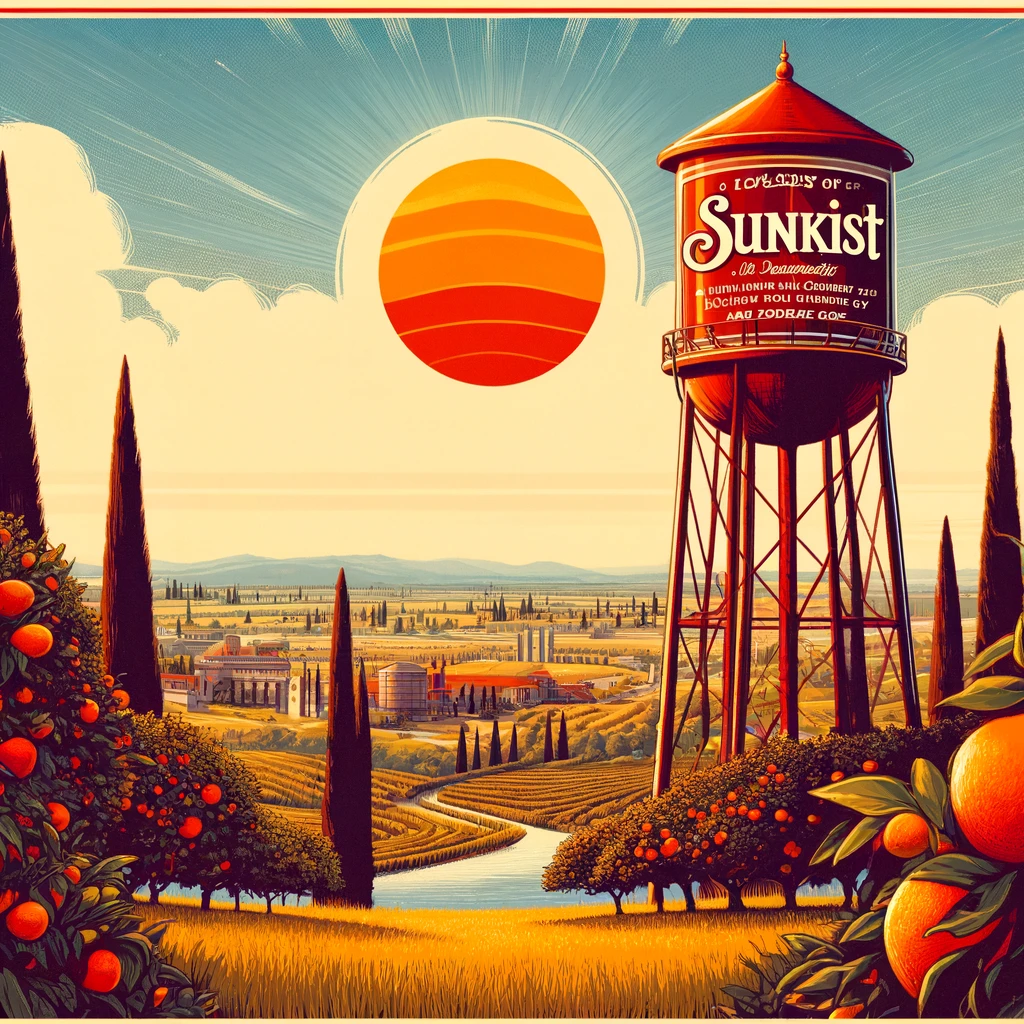Orange County, California, is synonymous with sunshine, beaches, and a laid-back lifestyle. But long before it became known for theme parks and coastal living, Orange County had a different claim to fame: citrus. At the heart of this golden era of oranges was Sunkist, a brand that not only shaped the landscape but also played a significant role in the development and identity of the region. This post delves into the rich history of Sunkist in Orange County, exploring its origins, impact on the local economy, and the enduring legacy that continues to influence the area today.
The Birth of Sunkist and the Citrus Boom
The story of Sunkist in Orange County begins in the late 19th century, during a time when the region was transforming from a sparse, rural area into an agricultural powerhouse. The discovery that Southern California’s climate was perfect for growing oranges, particularly the Valencia variety, led to a citrus boom that would forever change the area.
In 1893, the California Fruit Growers Exchange was formed, a cooperative of citrus growers united to better market their produce and stabilize prices. By 1908, this cooperative adopted the Sunkist name, a brand that quickly became synonymous with quality oranges. The name “Sunkist” was chosen to evoke the idea of sun-ripened fruit, highlighting the unique conditions in Southern California that produced some of the best oranges in the world.
Sunkist and Orange County’s Economic Growth
The rise of Sunkist paralleled the growth of Orange County itself. By the early 20th century, the county was covered in orange groves, with the fruit becoming a major export. The presence of Sunkist provided local farmers with a reliable market for their produce, which in turn fueled the local economy. Packinghouses, railroads, and related industries sprang up, providing jobs and infrastructure that helped transform Orange County from a rural area into a burgeoning economic hub.
One of the key locations tied to Sunkist’s history is the city of Orange, where the citrus industry was once the backbone of the community. The historic packinghouses in Orange are a testament to this period. Although many have been repurposed, such as the former Sunkist Packing House now home to The Packing House Shops, they remain an integral part of the city’s identity.
Another significant location is Irvine Ranch, where the Irvine Company played a major role in cultivating and exporting citrus, particularly through its collaboration with Sunkist. Today, the Irvine Ranch Historic Park offers a glimpse into the past, showcasing historic buildings and artifacts from the citrus era.
The town of Tustin is also notable, with its iconic Sunkist Water Tower standing as a landmark. The tower, once used for irrigation during the peak of the citrus industry, is now a symbol of the town’s rich agricultural history.
Sunkist Soft Drink: An Extension of the Brand
While Sunkist started as a cooperative focused on fresh oranges, its brand eventually expanded into various products, including one of the most popular orange-flavored soft drinks in the United States—Sunkist Soda. Introduced in 1979 by General Cinema Corporation, Sunkist Orange Soda quickly became a favorite due to its bold, citrus flavor, and the fact that it was the first orange soda to contain caffeine.
Today, Sunkist Soda is produced and marketed by Keurig Dr Pepper and remains a prominent product under the Sunkist brand. This extension into the soft drink market helped solidify Sunkist’s presence not just as a fruit grower’s cooperative but as a recognizable name in consumer goods. The soda is widely available in supermarkets, convenience stores, and vending machines across the country, furthering the reach of the Sunkist name beyond fresh produce.
Community and Cultural Impact
Beyond its economic contributions, Sunkist also had a significant impact on the community and culture of Orange County. The citrus industry influenced everything from local architecture to social events. For instance, many of the historic buildings in the region, including old packinghouses and homes of early citrus barons, reflect the wealth generated by the orange trade.
Community events such as the Orange International Street Fair are modern-day celebrations that owe much to the region’s citrus heritage. The fair, which takes place annually in the historic downtown Orange Plaza, brings together food, music, and entertainment from around the world but is rooted in the community spirit that Sunkist helped cultivate.
The Decline of Citrus Groves
As the mid-20th century approached, the landscape of Orange County began to change. The post-World War II housing boom brought rapid development to the area. Orange groves, once the lifeblood of the region, were gradually replaced by suburban homes, shopping centers, and highways. The very success of Orange County made it difficult for the citrus industry to continue at the same scale.
Sunkist, however, adapted to these changes. The company diversified its products, moving beyond fresh fruit into areas such as juices, sodas, and snacks. While the sprawling orange groves are mostly a memory today, the Sunkist brand continues to be a major player in the citrus industry, with its headquarters still located in California.
The Legacy of Sunkist in Orange County
Although the vast orange groves have largely disappeared, the legacy of Sunkist remains deeply embedded in the fabric of Orange County. The region’s name itself is a testament to its citrus-filled past. Towns like Orange, Anaheim, and Tustin were once the heart of the citrus industry, and reminders of this history can still be seen in the form of historic landmarks, museums, and even in the names of streets and neighborhoods.
For those interested in exploring this legacy, several attractions offer insights into Orange County’s citrus history:
- Orange County Heritage Museum – Located in Santa Ana, this museum offers exhibits on the county’s agricultural past, including the citrus industry.
- Heritage Hill Historic Park – This park in Lake Forest preserves four historic buildings, including a citrus packinghouse and farmhouses, offering a glimpse into the life of early Orange County settlers.
- Irvine Regional Park – One of the oldest parks in Orange County, it contains remnants of the original Irvine Ranch citrus groves, providing a scenic spot for picnics and reflection on the region’s agricultural roots.
The influence of Sunkist and the citrus industry also extends to the cultural identity of Orange County. The values of hard work, community, and innovation that characterized the early citrus growers are still evident in the region’s entrepreneurial spirit and close-knit communities.




